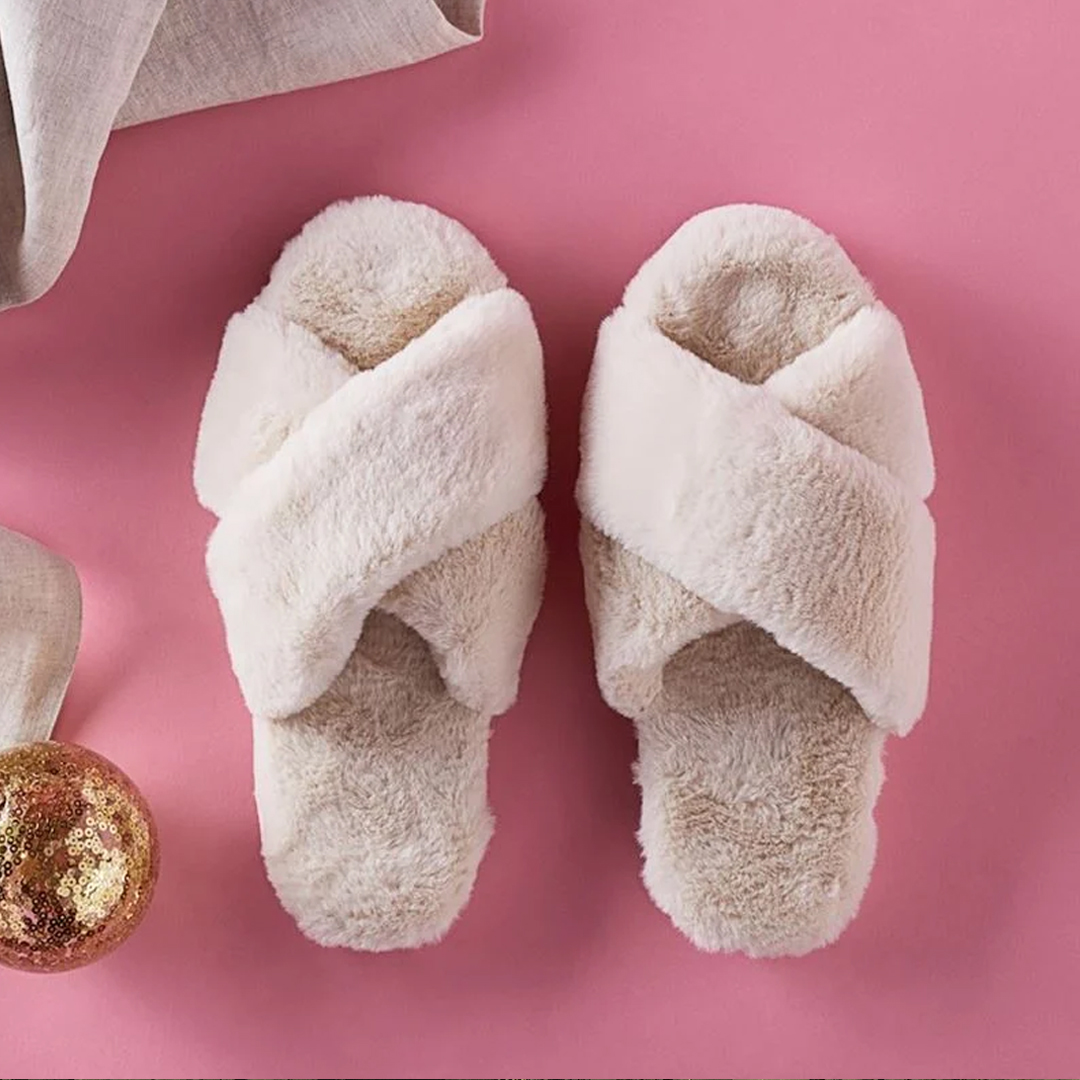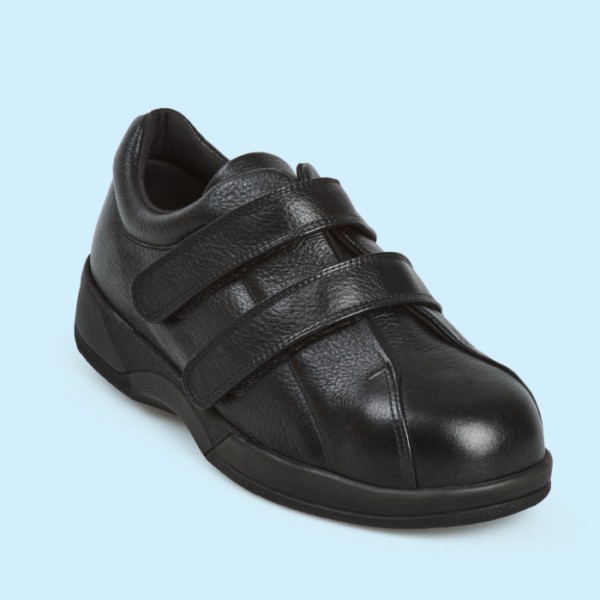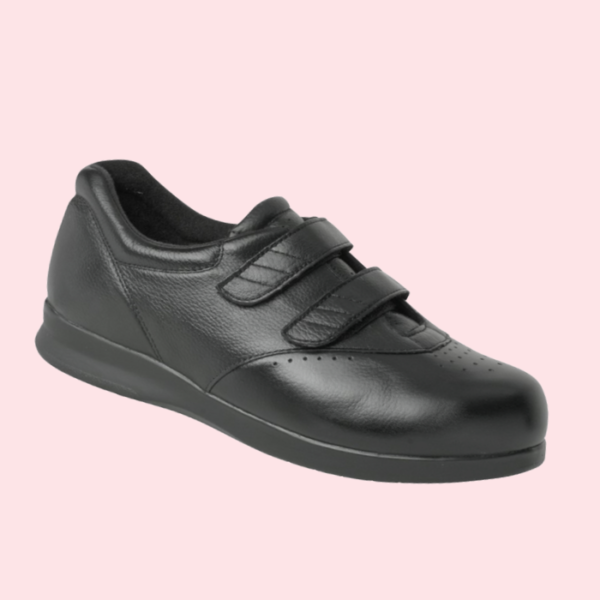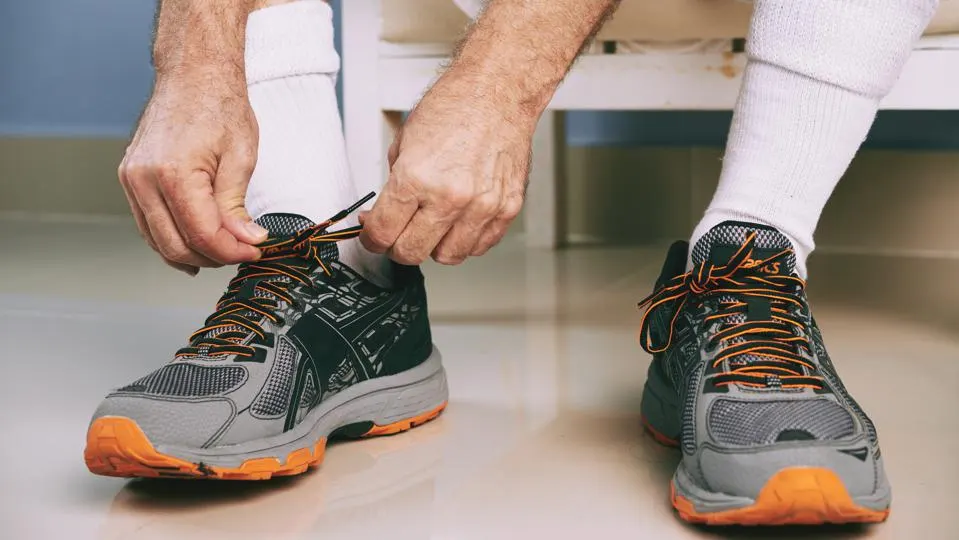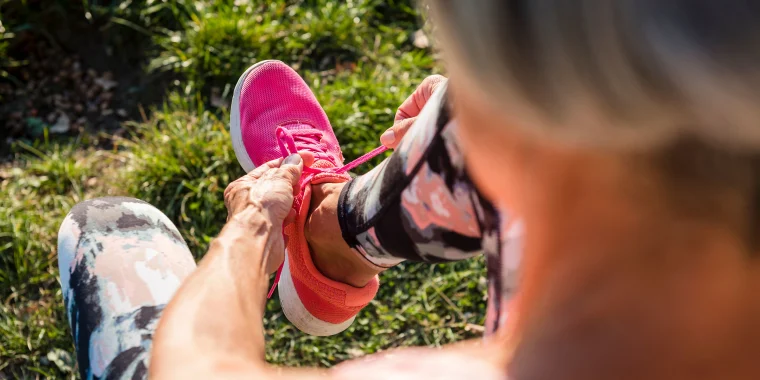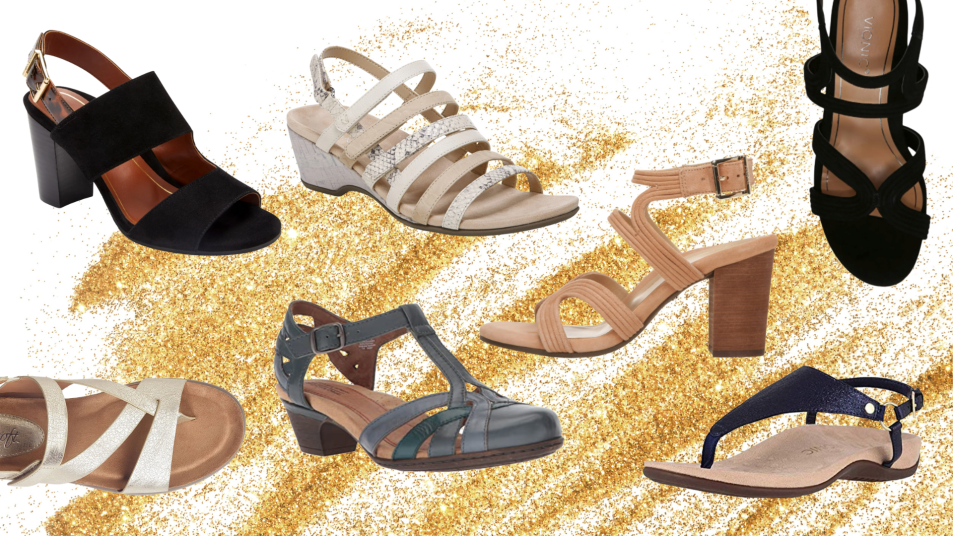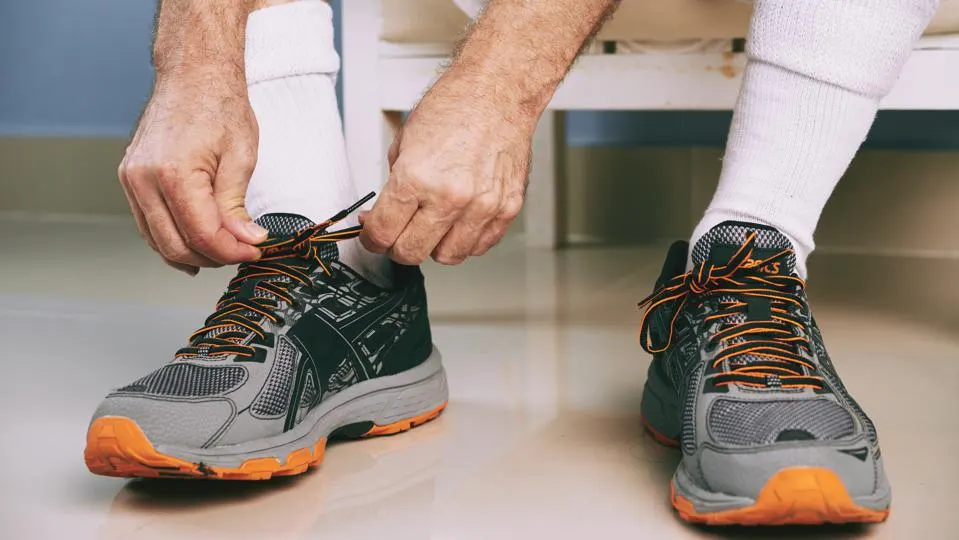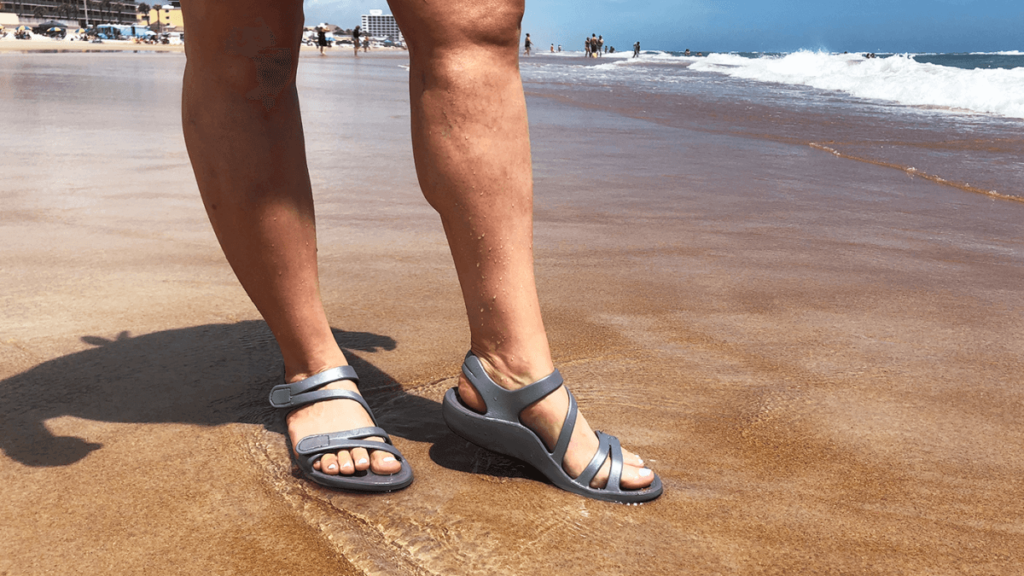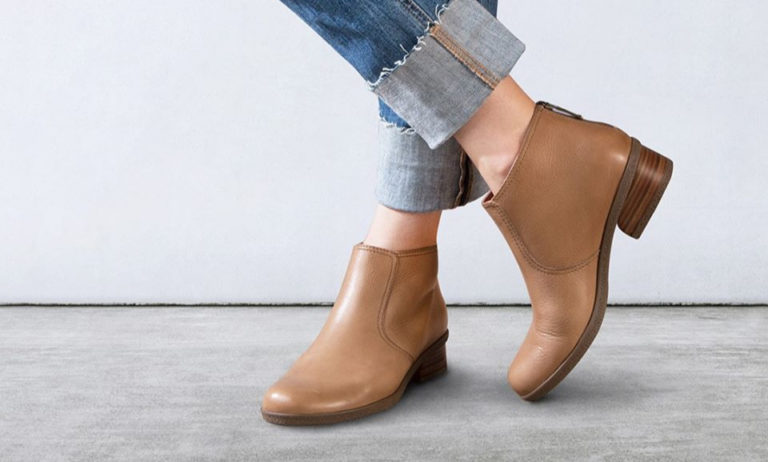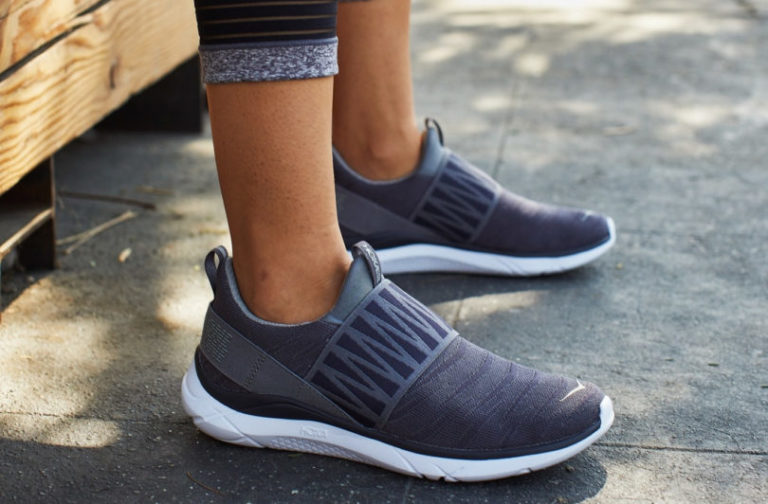The plantar fascia, a thick band of tissue that runs down the sole of the foot and connects the heel bone to the toes, is prone to inflammation and discomfort. This condition is known as plantar fasciitis. Heel discomfort is a defining feature, especially while taking the first few steps in the morning or after resting for a while. Along with medical care, shoes for plantar fasciitis are handy for a speedy recovery.
Understanding Plantar Fasciitis
Plantar fasciitis is a common foot condition that affects the plantar fascia, a thick band of tissue that runs down the sole of the foot. It is caused by overuse, improper footwear, and biomechanical imbalances. People who spend a lot of time on their feet, those who engage in repetitive activities like running and jumping, and individuals with flat feet or high arches are at a higher risk of developing plantar fasciitis.
The condition manifests as a sharp pain in the heel or the arch of the foot, especially in the morning or after long periods of standing or sitting. The pain may subside during activity but return afterwards. If left untreated, plantar fasciitis can become chronic and cause more severe symptoms like swelling and difficulty in walking.
Treatment of plantar fasciitis involves a combination of medical interventions, including rest, ice therapy, stretching exercises, physical therapy, and in some cases, surgery. However, choosing the right footwear is an essential part of managing plantar fasciitis symptoms and preventing the condition from worsening.
Wearing shoes that provide proper arch support, cushioning, and shock absorption can help reduce the pressure on the plantar fascia, provide relief from pain, and support the foot’s natural structure. That’s why finding the perfect shoes for plantar fasciitis is essential for a speedy recovery. In the next sections, we will look at some key features to look for in shoes for plantar fasciitis and the best shoe types to consider.
Best Shoe Types for Plantar Fasciitis: Sneakers, Sandals, and More
When it comes to choosing the best shoe types for plantar fasciitis, it’s important to consider both the design and the level of support they provide. Here are some top recommendations:
- Sneakers: The most popular shoe type for plantar fasciitis is sneakers, which come with excellent cushioning and support for the feet. Look for sneakers with good arch support, ample cushioning in the heel and forefoot, and a comfortable fit. Brands like New Balance, ASICS, and Brooks make some of the best sneakers for plantar fasciitis.
- Sandals: For those who prefer open-toe footwear, sandals can be a good option for plantar fasciitis. However, it’s essential to look for sandals with a contoured footbed, cushioning, and good arch support. Birkenstock, Vionic, and OOFOS make some excellent plantar fasciitis-friendly sandals.
- Dress Shoes: If you need to wear dress shoes to work, it’s still possible to find options that won’t aggravate your plantar fasciitis. Look for dress shoes with a supportive insole, padded collar, and cushioning in the heel. Brands like Rockport, Clarks, and ECCO make dress shoes that are suitable for plantar fasciitis.
- Work Boots: If your job requires you to wear work boots, it’s essential to find a pair that provides good support for your feet. Look for work boots with a steel or composite toe, a slip-resistant sole, and a padded collar. Brands like Timberland PRO and Wolverine make work boots that are comfortable and supportive for people with plantar fasciitis.
Tips for Proper Fitting of Shoes for Plantar Fasciitis
When choosing shoes for plantar fasciitis, it’s not just about finding the right style and features. Proper fit is crucial for optimal support and pain relief. Here are some tips to keep in mind:
- Measure your feet. Many people have one foot slightly larger than the other, so it’s important to measure both and choose the larger size.
- Try shoes on later in the day. Feet tend to swell throughout the day, so it’s best to try on shoes when your feet are at their largest.
- Wear the socks you plan to wear with the shoes. This will give you a more accurate idea of how they will fit and feel.
- Test for wiggle room. You should be able to wiggle your toes comfortably, but the shoes should not be too loose or too tight.
- Check for proper arch support. Shoes for plantar fasciitis should have proper arch support to help alleviate pressure on the plantar fascia. Check that the arch of the shoe aligns with the arch of your foot.
- Walk around in the shoes. Take a few laps around the store or your home to get a sense of how the shoes feel when in motion. If you feel any discomfort or pain, try a different size or style.
Remember, finding the perfect shoe for plantar fasciitis may take some trial and error. Don’t be afraid to return or exchange shoes that don’t work for you. Your feet will thank you for investing in the right shoes for your condition.
FAQs on Shoes for Plantar Fasciitis
1. Do I need to replace my shoes often if I have plantar fasciitis?
Yes, it is essential to replace your shoes regularly, especially if you wear them frequently. Worn-out shoes can cause increased stress on the plantar fascia and aggravate your symptoms. It is recommended to replace shoes every 300 to 500 miles of walking or running.
2. Can stretching exercises help relieve plantar fasciitis pain?
Yes, stretching exercises can help relieve pain and stiffness associated with plantar fasciitis. Exercises that focus on stretching the calf muscles and the plantar fascia itself are the most beneficial. Consult with your doctor or physical therapist before starting any stretching regimen.
3. Should I wear shoes all the time if I have plantar fasciitis?
It is recommended to wear shoes with proper support and cushioning as much as possible if you have plantar fasciitis. Walking barefoot or wearing unsupportive shoes can increase pain and prolong healing time. If you need to be barefoot, try to keep it to a minimum, and use arch supports if possible.
Physical therapy for Plantar Fasciitis
Physical therapy can be an effective treatment option for plantar fasciitis. In addition to wearing proper shoes and using other medical interventions, exercises can be performed to stretch and strengthen the muscles in the feet and lower legs, ultimately reducing inflammation and pain in the plantar fascia.
One common physical therapy technique is called the “Towel Stretch.” To perform this exercise, sit on the ground with your legs extended straight out in front of you. Loop a towel around the ball of your foot and gently pull back, feeling a stretch in the arch of your foot and the back of your calf. Hold the stretch for 15-30 seconds and repeat on the other foot.
Another exercise is the “Calf Raise.” Stand on the edge of a step with just the balls of your feet on the edge and your heels hanging off. Slowly raise your heels up, then lower them back down. Repeat this movement 10-15 times, feeling the stretch in your calves.
It’s important to work with a physical therapist to develop a personalized treatment plan that targets the specific needs of your plantar fasciitis. With consistency and dedication, physical therapy can be a valuable tool in alleviating pain and promoting healing in the feet and lower legs.
Home Remedies for Plantar Fasciitis
While shoes for plantar fasciitis can be very helpful, there are also some home remedies that you can try to help alleviate your symptoms. Here are some options:
- Ice: Applying ice to the affected area for 10-15 minutes at a time, several times a day, can help reduce inflammation and pain.
- Stretching: Stretching your calf muscles and the bottom of your foot can help loosen up the tightness that can contribute to plantar fasciitis pain.
- Massage: Gently massaging the bottom of your foot can help reduce tension and inflammation.
- Epsom salt soak: Adding Epsom salt to a warm foot soak can help relax muscles and reduce pain and inflammation.
- Footrest: When sitting, use a footrest to keep your foot elevated and reduce pressure on the plantar fascia.
- Arch support: Wearing supportive insoles or arch supports can help reduce strain on the plantar fascia.
- Proper footwear: Make sure to wear shoes with good arch support and cushioning to reduce impact and strain on the feet.
- Weight management: Maintaining a healthy weight can help reduce stress on the plantar fascia and prevent further damage.
While home remedies can be helpful, it’s important to consult with a healthcare professional if you have persistent pain or are experiencing other symptoms. They can provide a diagnosis and recommend the best treatment plan for your individual needs.
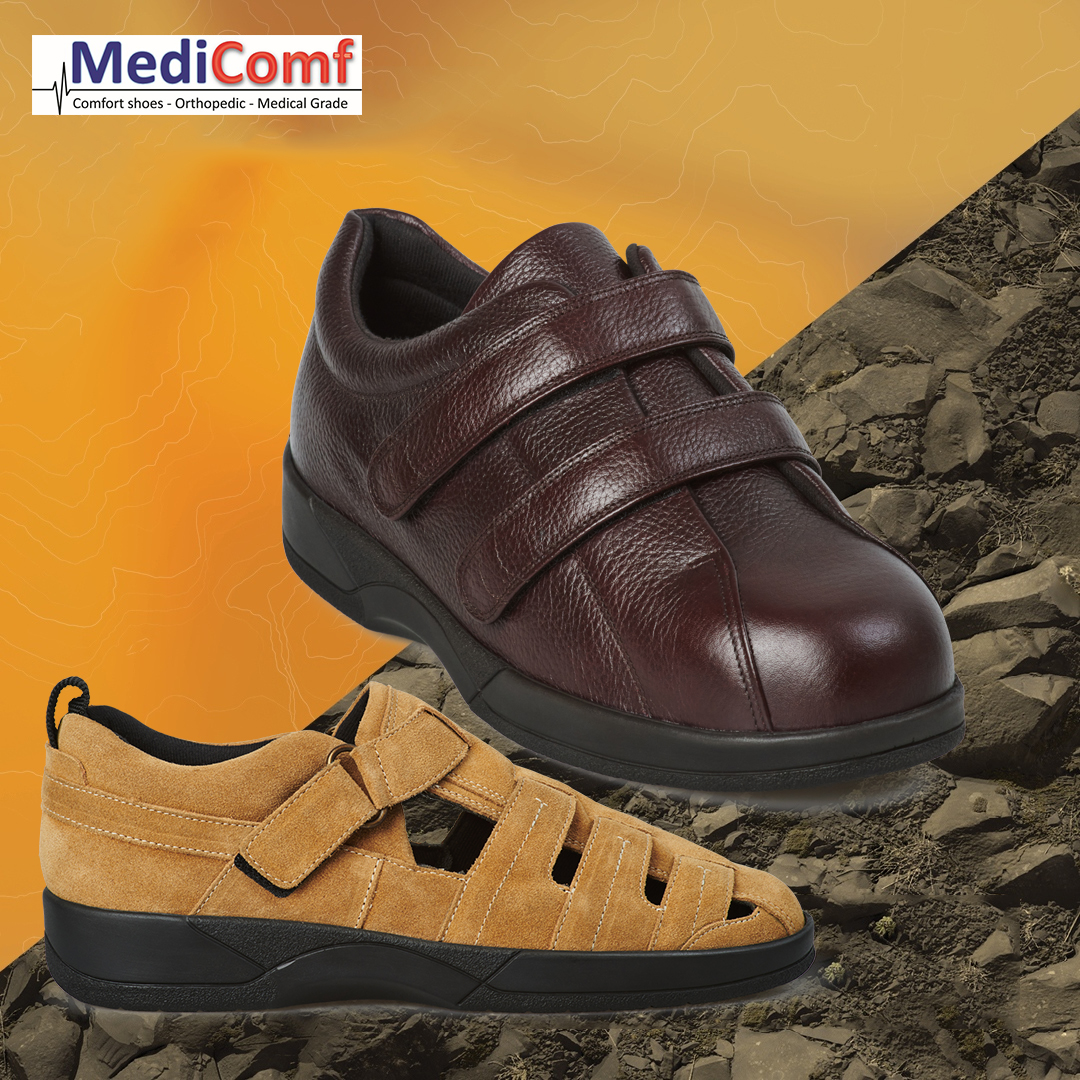
Shoes
